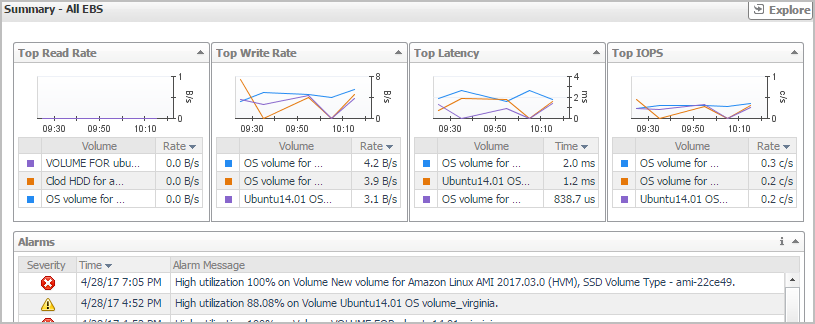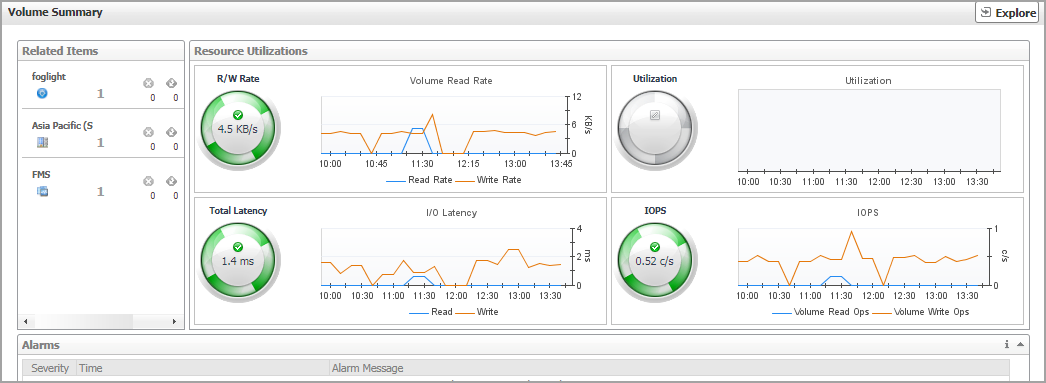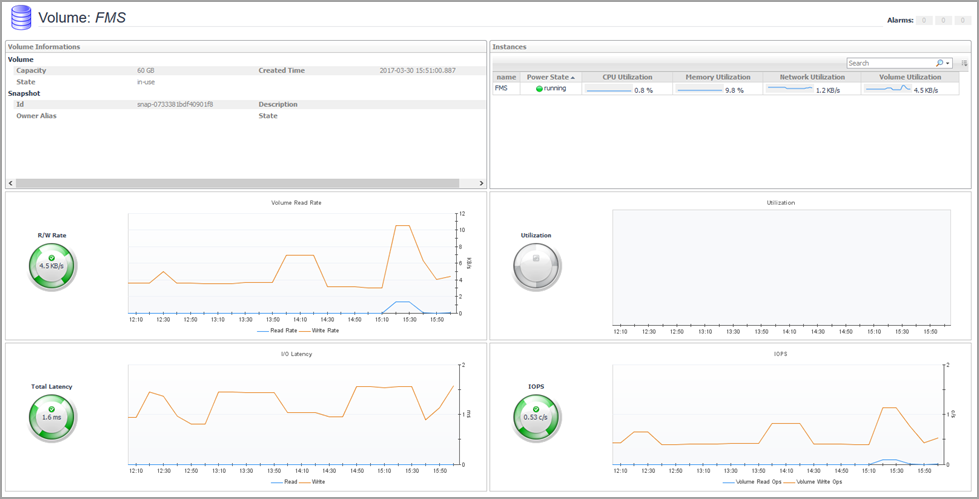Summary - All EBS view
The Summary - All EBS view displays overall information for all EBS instances in the selected service and identifies the elements that consume the highest amount of resources. This view appears on the right when you select All EBS in the EBS view.

This view consists of the following embedded views:
EBS Summary view
The EBS Summary view displays complete details for an EBS instance. This view appears on the right when you select an EBS instance in the EBS view.

This view consists of the following embedded views:
|
|
Shows the numbers and states of the selected EBS instance running on the monitored AWS environment. |
|
|
|
• |
EC2 Instances. The number of the ECS2 instances that are associated with the selected account, followed by related alarm counts, broken down by the alarm state (Normal, Warning, Critical, Fatal). | |
|
|
|
• |
Regions. The number of the regions that are that are associated with the selected account, followed by related alarm counts, broken down by the alarm state (Normal, Warning, Critical, Fatal). | |
|
|
|
• |
Accounts. The number of the accounts that are that are associated with the selected region, followed by related alarm counts, broken down by the alarm state (Normal, Warning, Critical, Fatal). | |
|
|
Drill down on: |
|
|
|
• |
EC2 Instances. Displays the EC2 Instances Inventory dwell, showing the name and state of the associated Resource Groups. |
|
|
|
|
• |
Regions. Displays the Regions Inventory dwell, showing the name and state of the associated accounts. |
|
|
|
|
• |
Accounts. Displays the Other Items Inventory dwell, showing the name and state of the associated accounts. |
|
Explore - Volume view
The Explore - Volume view appears when you click Explore in the EBS Summary view.

This view includes the following embedded views.
System Info Tab
The System Info tab of the Cloud Manager dashboard contains the Images and AWS Health Event tables to help you understand the monitored AWS environment.

The Cloud Manager dashboard opens.
|
4 |
Click System Info in the actions bar. |
The System Info view opens on the bottom of
Cloud Manager dashboard.
For more information, see the following topics:
|
|
|
• |
Name. Shows the image name. | |
|
|
|
|
|
|
• |
Visibility. Indicates whether the image is public or private. | |
|
|
|
• |
Status. Indicates whether the image is available or pending. | |
|
|
|
• |
Instances Count. Shows the total number of EC2 instances that are created by this Amazon Machine Image (AMI). | |
|
|
|
|
|
|
|
|
|
• |
Name. Shows the event name. | |
|
|
|
• |
Region. Indicates the region in which the event occurred. | |
|
|
|
|
|
|
• |
Status. Indicates the event status. | |
|
|
|
• |
Last Update. Shows the date when the event was last updated. | |
|
|
|






